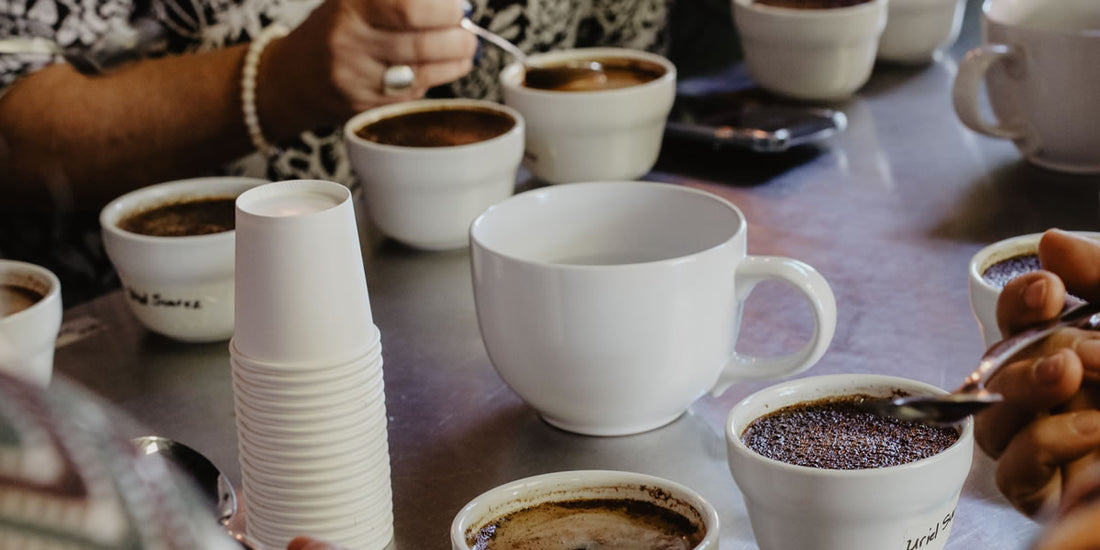
Coffee cupping
Share
Coffee cupping is a formalized and standardized method used by coffee professionals to evaluate the sensory characteristics and quality of coffee beans. It involves a systematic process of observing, smelling, slurping, and tasting coffee to assess its aroma, flavor, acidity, body, and aftertaste. Coffee cupping is commonly used by coffee growers, roasters, and buyers to evaluate different coffees and make informed decisions about their quality and suitability for specific purposes.
Here's a step-by-step overview of the coffee cupping process:
- Setup: The coffee cupping setup typically includes clean cups, hot water, coffee beans, a grinder, a scale, a spoon, and a cupping form for recording observations.
- Bean Evaluation: The coffee beans to be cupped are visually inspected for color, size, and defects before grinding. The aroma of the dry coffee grounds may also be evaluated by sniffing them.
- Cupping: Hot water is poured over the coffee grounds in each cup, and the coffee is allowed to steep for a specific time (usually 4-6 minutes). During this time, the coffee forms a "crust" on the surface, which is broken by gently stirring with a spoon to release the aroma.
- Aroma Evaluation: The cupper leans over the cup and inhales the aroma, noting any distinct fragrances or nuances. This step helps to identify the coffee's aroma characteristics, such as floral, fruity, or spicy notes.
- Taste Evaluation: Using a spoon, the cupper slurps the coffee from the spoon to aspirate it and spread it across the entire tongue to fully experience the flavors. The cupper evaluates the coffee's flavor profile, including acidity, sweetness, bitterness, and any other taste sensations.
- Body Evaluation: The cupper assesses the body or mouthfeel of the coffee, which refers to its texture and weight in the mouth. Coffees can have different body characteristics, such as light, medium, or full-bodied.
- Aftertaste Evaluation: The cupper notes the aftertaste or lingering flavors that remain in the mouth after swallowing the coffee. This can include descriptors such as clean, bright, or lingering.
- Scoring and Recording: The cupper uses a cupping form or scorecard to record observations and assign scores based on predefined criteria. This allows for consistent evaluation and comparison of different coffees.
Coffee cupping is a sensory evaluation process that requires skill and practice to develop a keen sense of taste and smell. It is widely used in the coffee industry to assess and compare the quality and characteristics of different coffees, and is an important tool in determining the flavor profile and potential of coffee beans.
